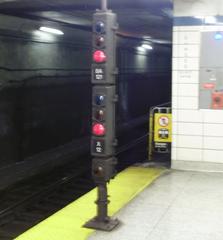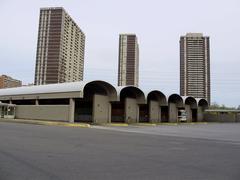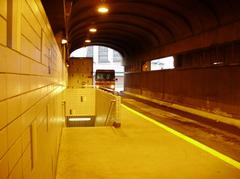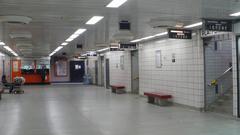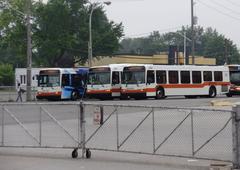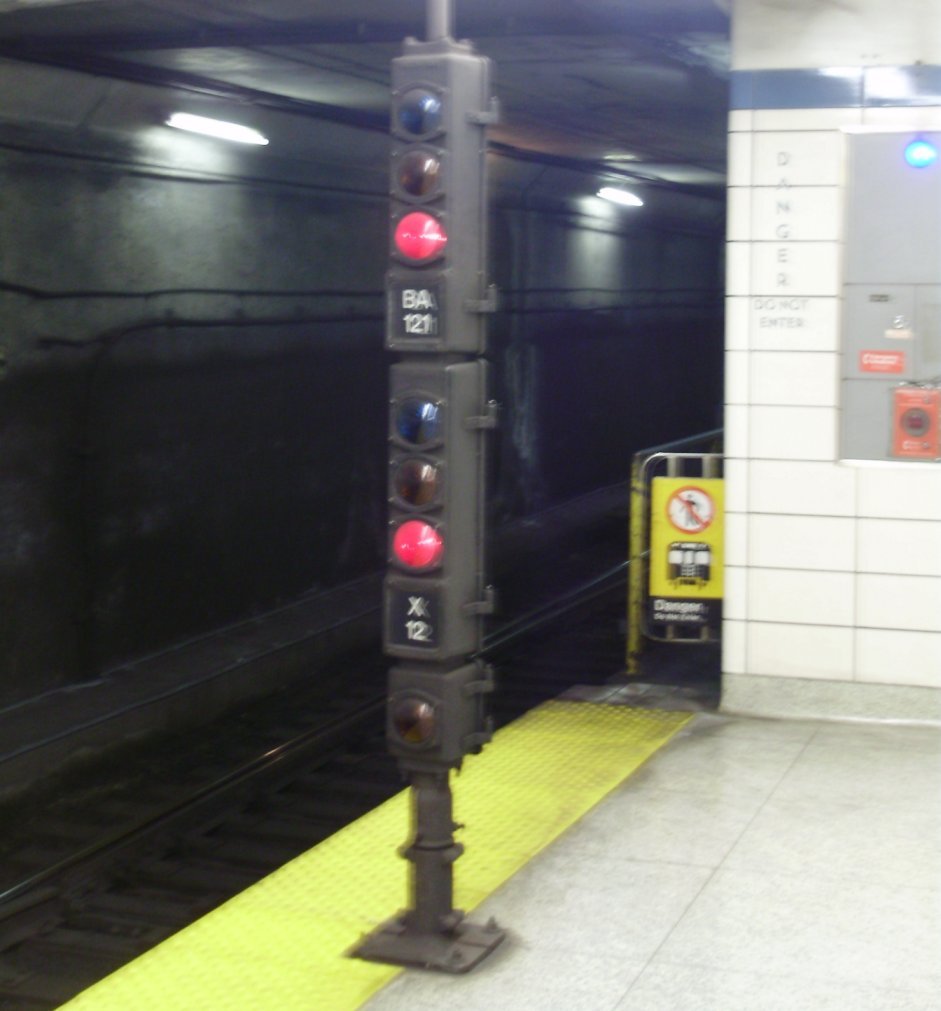
Islington Toronto Historical Sites: Visiting Hours, Tickets, and Tourist Guide
Date: 15/06/2025
Introduction to Islington Toronto Historical Sites
Islington, located in Toronto’s west end within the former Etobicoke township, is a vibrant neighbourhood renowned for its unique blend of history, culture, and public art. Once a rural settlement established in the early 19th century, Islington has grown into a suburban community celebrated for its heritage preservation and multicultural vibrancy. The neighbourhood’s evolution is vividly chronicled in its celebrated Village of Islington Murals—over 25 large-scale public artworks that narrate the story of the area’s past and present (Village of Islington; TOcityscapes).
Today, Islington welcomes visitors to explore its historic sites such as Montgomery’s Inn and the Islington Burial Grounds, as well as its artistic mural corridor along Dundas Street West. With easy access via Islington Station on the TTC, the neighbourhood offers a memorable experience for art lovers, history enthusiasts, and casual explorers alike, blending outdoor mural tours, heritage landmarks, community events, and green spaces (Neighbourhood Guide; BlogTO).
Table of Contents
- Discover Islington: Toronto’s Historic Neighbourhood
- Early Settlement and Naming Origins
- Growth and Development Through the 19th and 20th Centuries
- Cultural Significance and Community Identity
- Notable Historical Landmarks
- Key Historical Events
- Visiting Islington: Practical Information
- The Village of Islington Murals: History and Visitor Guide
- Montgomery’s Inn: Heritage Site and Museum
- Dundas Street West Historic Shopping District
- Mimico Creek and Islington Golf Club
- Heritage Homes and Streetscapes
- Arts Etobicoke and the Creative Village
- Accessibility and Transit Landmarks
- Parks and Green Spaces
- Notable Schools and Community Facilities
- Practical Visitor Information
- Frequently Asked Questions (FAQ)
- Plan Your Visit
Discover Islington: Toronto’s Historic Neighbourhood
Islington is a west Toronto neighbourhood with a distinctive small-town feel. It offers a unique window into Toronto’s layered history, from its 19th-century rural roots to its current status as a vibrant, multicultural hub. Visitors are drawn to Islington for its accessible public art, historical landmarks, green spaces, and welcoming community spirit.
Early Settlement and Naming Origins
Settled in the early 1800s by European immigrants, Islington first developed along Dundas Street—a key colonial route. The area was originally called Mimico, but in 1859, during a community meeting that could not reach consensus on a name, Elizabeth Smith, the local innkeeper’s wife, proposed “Islington” after her birthplace near London, England (Toronto.com).
Growth and Development Through the 19th and 20th Centuries
Islington’s early years centered on agriculture and rural life. The expansion of the railway in the late 1800s and the arrival of streetcar lines in the early 1900s integrated it more closely with Toronto. The post-WWII era brought rapid suburban growth, with new residential developments, schools, and commercial districts, cementing Islington’s place as a thriving Toronto suburb.
Cultural Significance and Community Identity
Originally a predominantly Eurocentric community, Islington has evolved into a multicultural neighbourhood. Its celebrated Village of Islington Murals, commissioned since 2004 by the Islington Business Improvement Area (BIA), reflect the area’s diverse history and vibrant identity, covering over 15,000 square feet across more than 25 murals (Village of Islington; TOcityscapes).
Notable Historical Landmarks
- Dundas Street West: The heart of the neighbourhood, home to heritage buildings, cafes, shops, and the mural corridor (Village of Islington).
- Islington United Church: Established in 1815, this church remains a community cornerstone and a subject of public art (TOcityscapes).
- Islington Burial Grounds: One of Toronto’s oldest cemeteries, offering a peaceful setting and insights into the area’s early settlers.
- The Old Islington Hotel: Once a social and travel hub, now remembered in murals and local lore.
- Municipal Offices and Police Station: Housed in a repurposed Methodist church, this building exemplifies adaptive reuse in heritage preservation (TOcityscapes).
Key Historical Events
- Hurricane Hazel (1954): The destructive storm that flooded Mimico Creek and parts of Islington, memorialized in local murals (TOcityscapes).
- Suburbanization and Modernization: Postwar development and the 1998 amalgamation with Toronto transformed Islington into a dynamic urban community (Toronto Neighbourhood Profiles).
Visiting Islington: Practical Information
Visiting Hours & Accessibility:
- The Village of Islington Murals are outdoors and viewable year-round, at any time.
- Islington United Church and Montgomery’s Inn have specific visiting hours; check official sites for details.
- Respect private property when sightseeing, as some heritage buildings are not open to the public.
Tickets:
- Public art and outdoor heritage sites are free to visit.
- Montgomery’s Inn offers free admission with donations appreciated.
Travel Tips:
- Islington Station (TTC Line 2) is the main transit access point.
- Wear comfortable shoes for walking the mural corridor.
- Plan visits during community events or mural tours for a richer experience.
Nearby Attractions:
- Humber River and Mimico Creek parks
- Etobicoke Civic Centre
- Other Toronto historical sites accessible via transit
The Village of Islington Murals: History and Visitor Guide
The Islington Village Murals, a prominent public art feature along Dundas Street West, celebrate the neighbourhood’s history and diversity. These murals, created by local artists and community members, depict scenes from Islington’s agricultural beginnings, community milestones, and multicultural evolution.
- Location: Dundas Street West, between Kipling Avenue and Islington Avenue
- Hours: Outdoor, accessible year-round, dawn to dusk
- Admission: Free
- Accessibility: Wheelchair accessible sidewalks; close to Islington subway station (Islington Village BIA)
Guided Tours: Occasional walking tours are offered—check the Islington Village BIA for updates.
Tips:
- Visit in daylight for best viewing.
- Bring a camera.
- Explore local shops and eateries along the mural route.
Montgomery’s Inn: Heritage Site and Museum
Montgomery’s Inn, constructed in the 1830s, is one of Toronto’s best-preserved heritage inns. It now operates as a museum with period rooms, exhibits, and community events, including a weekly farmers’ market (CommunitySearch).
- Hours: Wednesday–Sunday, 11:00 AM–5:00 PM (closed Mondays and Tuesdays)
- Admission: Free, donations welcomed
- Tours: Guided tours available during open hours; group bookings possible in advance
Islington Burial Grounds
Established circa 1807, this cemetery is among Toronto’s oldest and is the final resting place of many founding families (Neighbourhood Guide). The site is open daily from dawn to dusk and provides a serene setting for reflection and learning about local history.
Dundas Street West Historic Shopping District
This corridor features heritage architecture, boutique shops, cafes, and restaurants (Neighbourhood Guide). Many storefronts display local art and host community events, making it a lively hub for residents and visitors.
Mimico Creek and Islington Golf Club
Mimico Creek winds through Islington, bordered by parks and trails ideal for walking and cycling (CommunitySearch). The adjacent Islington Golf Club, established in 1923, adds to the area’s scenic charm.
Heritage Homes and Streetscapes
Islington’s tree-lined streets feature homes from the 1930s to the 1950s, in styles ranging from Georgian and Colonial to Tudor and Cape Cod (CommunitySearch). Mature gardens and green spaces add to the neighbourhood’s appeal.
Arts Etobicoke and the Creative Village
Arts Etobicoke, a local non-profit, supports arts education and public programming in the neighbourhood (CommunitySearch). The Creative Village and The Music Studio offer classes and events that enrich Islington’s cultural landscape.
Accessibility and Transit Landmarks
Islington is well-served by public transit. Islington subway station (TTC Line 2) connects to downtown Toronto and regional bus routes, including service to Pearson International Airport (BlogTO; TTC Station Info). Most attractions are wheelchair accessible; always check specific sites for accommodations.
Parks and Green Spaces
The neighbourhood offers extensive parks, including Tom Riley Park with sports fields and playgrounds. Smaller parks and green spaces along Mimico Creek provide tranquil spots for relaxation (Neighbourhood Guide).
Notable Schools and Community Facilities
Islington features a variety of public, Catholic, and private schools, as well as community centres and libraries, reinforcing its family-friendly character (CommunitySearch).
Practical Visitor Information
Getting to and Around Islington
- Transit: Islington subway station (TTC Line 2) is the main hub (TTC Station Info).
- Parking: Several TTC lots are nearby, but check availability in advance; overnight parking is not permitted (Reddit Discussion).
Accessibility
Toronto’s public transit system is increasingly accessible, with elevators, ramps, and accessible vehicles (TTC Accessibility). Confirm station accessibility before travel if needed.
Accommodation
Options range from hotels to short-term rentals. Look for reputable hotels or highly rated rentals with secure entrances (History of Toronto).
Safety
Toronto is a safe city, including the Islington area. Exercise typical urban caution regarding valuables and nighttime travel (Ontario Away; Toronto Police Service; The Broke Backpacker).
Weather
Toronto’s seasons are distinct. Summers are warm; winters can be cold and snowy. Pack accordingly (Ontario Away).
Local Services
Islington offers a wide range of dining options, shops, and health services. Emergency number: 911. Tourist information is available at Union Station (Toronto Tourist Information Centre).
Frequently Asked Questions (FAQ)
What are the visiting hours for Islington’s historical sites?
- Outdoor murals and burial grounds are accessible year-round, anytime.
- Montgomery’s Inn: Wed–Sun, 11 AM–5 PM.
Are guided tours available?
- Occasional mural tours are offered. Check the Islington Village BIA for schedules.
Is there a cost to visit?
- Most landmarks and murals are free.
How do I get to Islington?
- Use the TTC subway to Islington Station, with frequent bus and subway connections.
Is Islington accessible for wheelchair users?
- Yes, most public transit and sidewalks are accessible.
Plan Your Visit
- Download the Audiala app for self-guided tours and event updates.
- Check out local events and mural maps on the Village of Islington BIA.
- For the latest information, follow community organizations on social media.
Summary and Final Tips
Islington is a living showcase of Toronto’s historical depth and cultural diversity. With its accessible public art, welcoming community, and convenient location, it provides visitors with a rewarding and memorable experience. Plan ahead using transit, check for guided tours, and enjoy the murals, museums, parks, and vibrant shopping district (Village of Islington; Islington Village BIA; Neighbourhood Guide).
References and Official Links
- Toronto.com - A Brief History of the TTC’s Subway Station Names
- Village of Islington Murals Official Site
- TOcityscapes: Village of Islington Murals
- Islington Village BIA
- Neighbourhood Guide: Islington Village
- TTC Islington Station Information
- BlogTO: History of Village of Islington
- CommunitySearch: Islington Village Toronto
- Reddit - Islington Parking Reduction
- TTC Accessibility
- History of Toronto - Safety
- Ontario Away - Visiting Toronto
- Toronto Police Service - Crime Statistics
- The Broke Backpacker - Is Toronto Safe?
- Toronto Tourist Information Centre
- Time Out Toronto - Best Things To Do
